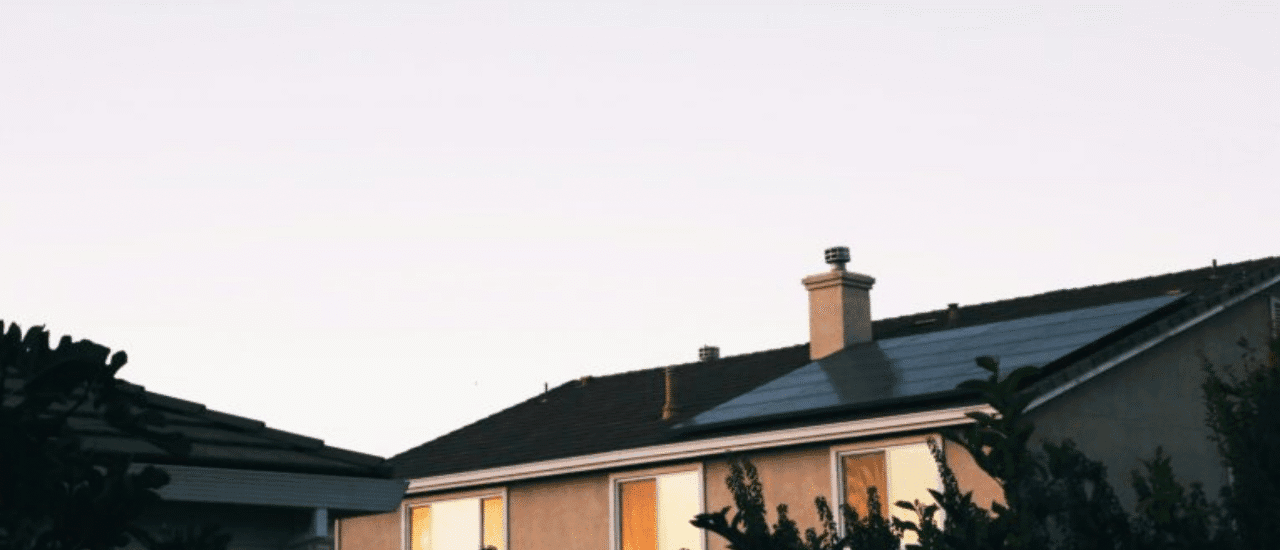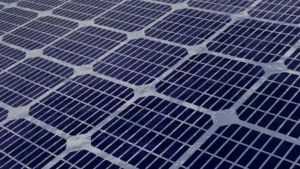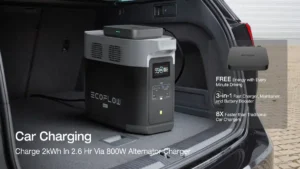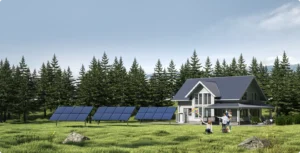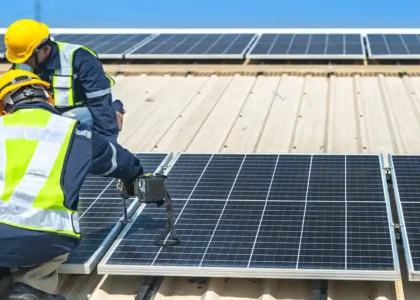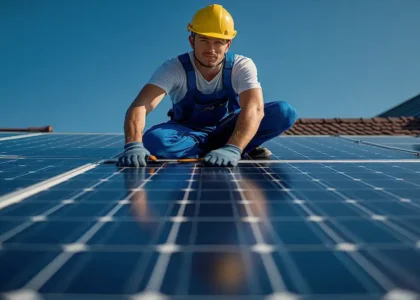Solar energy has been a game changer for rural homes, especially in the U.S. and Europe, where traditional energy infrastructure is often more costly and less available. In this article, we will discuss how solar energy for rural homes is proving massively cost effective while also shaping a sustainable future with cleaner energy. If you own a house in USA or in Europe and you are in remote area then you can benefit so much from solar energy. We will explore the different kinds of solar solutions available for rural homes, as well as explore how solar power in rural areas is changing lives and communities. We will also cover the specific incentives and policies in each region that are making solar energy more accessible.
The Role of Solar Energy in Rural Homes
In both the U.S. and Europe, many rural areas struggle with reliable access to affordable energy. Whether it’s the cost of long-distance transmission lines or the unreliability of the grid in more remote areas, rural communities often find themselves paying higher energy bills. This is where solar power for rural areas offers a significant advantage. Solar panels provide an alternative solution that allows rural homes to generate their own electricity, reducing dependence on grid-based energy.
Off-grid solar power for rural areas is particularly beneficial for homeowners located in places where the grid infrastructure is insufficient or non-existent. Off-grid systems are designed to work independently, storing energy in batteries so homeowners can continue to use electricity at night or during cloudy days. These systems are not only cost-effective in the long run but also offer greater energy independence.
In this section, we will cover various case studies of solar energy in rural regions
1. U.S Rural Areas: In West Virginia and other rural states like Arizona, and New Mexico, rural homes solar energy is on the rise. In Arizona’s desert regions, for instance, many homeowners are installing solar panels to reduce their electricity bills. Indeed, a report from the Solar Energy Industries Association (SEIA) indicates that Arizona is one of the top U.S. states for solar adoption, meaning off-grid solar power for rural areas is an attractive solution for those interested in lowering electricity bills.
Just this week I learned about the Mimbres Valley in New Mexico, where the families are turning to solar energy in rural areas for the same reason we all do — high power costs and an unreliable grid they plan to go without in the future. The savings can extend over several decades because large numbers of homeowners have been able to have solar panels installed with little up-front cost, thanks to federal solar tax credits.
2. Solar Energy in Europe: In the U.S. And Europe, solar energy has developed significantly, with some countries (like Germany and Spain) taking the lead. Those who spend time in the sunniest parts of Spain would be used to looking at clusters of solar panels, be it in the city or even out in the countryside. Subsidies from the European Union (EU) and incentives for green energy have facilitated the transition of rural consumers to solar.
One example in Southern Spain where local agricultural cooperative COMPLETA has moved from traditional fossil fuel to renewable energy powered with around 80% solar energy. Switching rural homes over to solar power has enabled the cooperative to reduce costs and even make some money by selling excess energy back to the grid.
Regional Solar Incentives: U.S. vs. Europe
The availability of government incentives is one of the major factors driving the adoption of solar solutions for rural homes in the U.S. and Europe. These incentives assist with lowering the up-front cost of having solar panels installed and making it financially possible for homeowners, especially in rural areas.
U.S. Solar Incentives:
- The U.S. federal government offers a solar tax credit (known as the Investment Tax Credit or ITC), which provides a significant deduction on solar installation costs. Homeowners can deduct up to 26% of the cost of a solar system from their federal taxes.
- Many states also offer additional incentives such as property tax exemptions and sales tax exemptions for solar equipment.
- Off-grid solar power for rural areas in states like Alaska and Montana is particularly popular due to the remote locations, where solar power helps save on the high costs of extending grid infrastructure.
European Solar Incentives:
- In Europe, solar energy policies vary from country to country, but the EU Green Deal has created incentives aimed at achieving carbon neutrality by 2050. Many EU countries offer subsidies and tax breaks for homeowners installing solar panels. For instance, in Germany, the government offers generous incentives for residential solar installations.
- Countries like France and Italy also have extensive feed-in tariffs that encourage the installation of solar systems by guaranteeing homeowners payments for the excess electricity generated by their panels.
Is It Possible to Use Solar Power in Rural Areas?
Yes, solar can work in rural areas, and in fact, it is usually the most viable form of energy for rural places with limited grid. Solar power systems are scalable and to different sizes and energy requirements for most rural homes. Solar energy in rural homes and the technology behind it have come a long way, making installation and maintenance of solar systems easier for homeowners.
Off-grid solar power enables rural regions to minimize their dependence (or disconnect) from the grid completely, if they wish. In the U.S., Europe, and similar environments, solar power is a clean and renewable source of energy with reliable long-term costs and availability.
What Are Some Advantages of Solar for Rural Homes?
The advantages of solar energy for rural residences are not only financial. So here are some of the main benefits of doing so:
- Energy Independence: Rural homeowners can generate their own power and be less reliant on utility companies.
- Cost Savings: Once the initial investment is covered, solar energy significantly reduces electricity bills.
- Sustainability: Solar is a renewable energy source, unlike fossil fuels. By choosing solar, rural homeowners contribute to a cleaner environment and help reduce their carbon footprints.
- Government Support: Incentives like the solar tax credit in the U.S. and EU subsidies make solar energy more accessible to rural residents.
Renewable Energy: Solar vs. Wind Power
Solar is great for rural homes, but many people want to know about the pros and cons of wind power as an alternative renewable energy source.
Solar Pros:
- Easier to install in a variety of locations.
- Requires less maintenance.
- Works well in areas with plenty of sunlight.
Wind Pros:
- Provides continuous energy generation, especially in windy areas.
- Can generate more electricity than solar in certain conditions.
Solar Cons:
- Solar panels depend on sunlight, so energy production is lower on cloudy days or at night.
Wind Cons:
- Wind turbines require significant space.
- Maintenance can be more intensive than solar.
When considering solar or wind power for rural homes, it’s essential to factor in local conditions, such as sunlight and wind availability, before deciding on the best energy solution.
Summary: The Rural Revolution: Stability and Solar
As we’ve seen, solar energy can transform rural homes in the U.S. and Europe, giving homeowners an affordable, sustainable, energy-independent and hassle-free method to power their way of living. Supported by regional concepts such as U.S. solar tax breaks and EU subsidies with everyone in rural areas solar adoption is expected to continue growing. With the progression of technology, the affordability and approachability of off-grid solar systems will only increase, transforming rural energetic employments all the more effectively.
When it comes to solar solutions for rural homes in the U.S. and Europe, the outlook is sunny. Beyond powering your home, solar energy can help build a cleaner, greener world.


